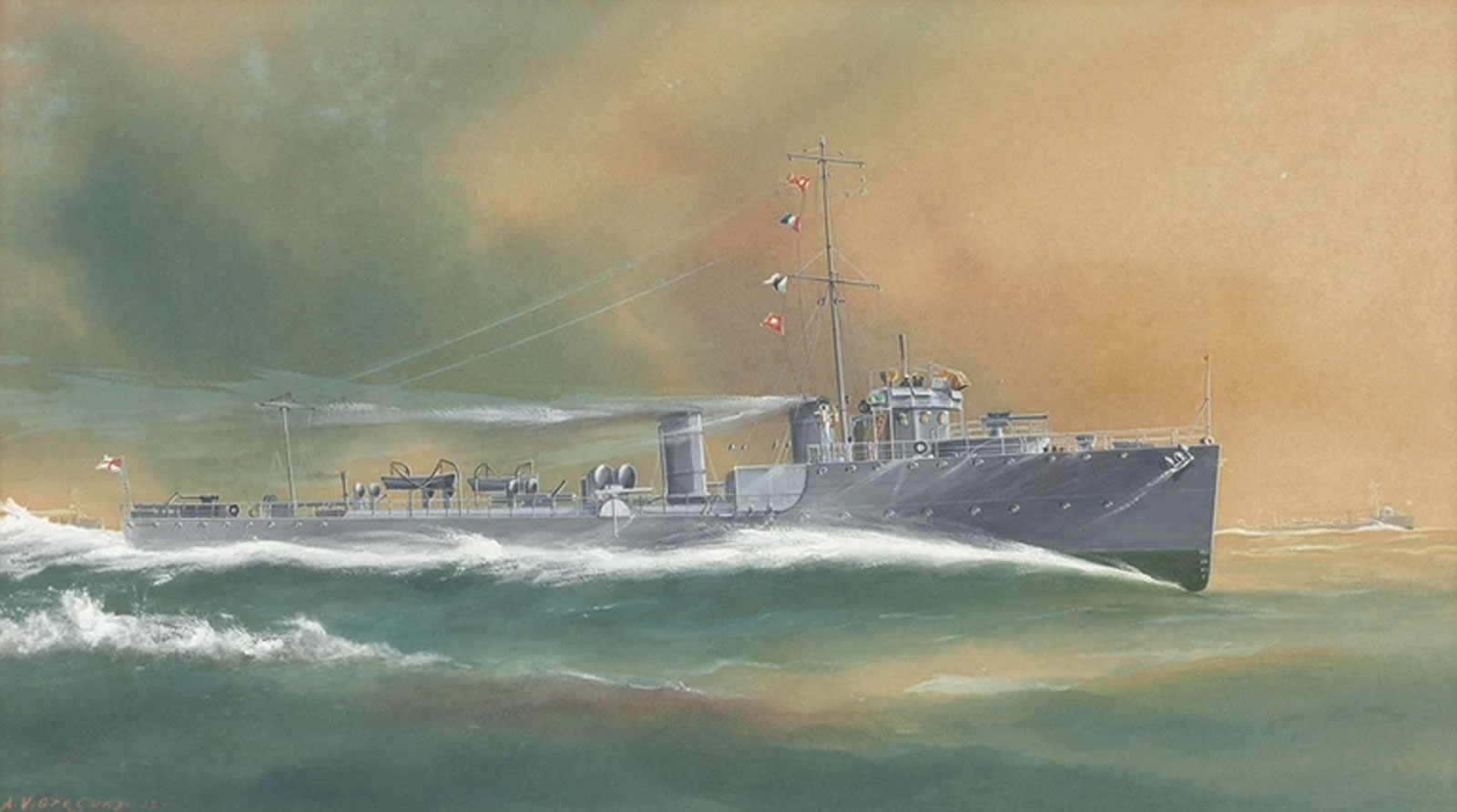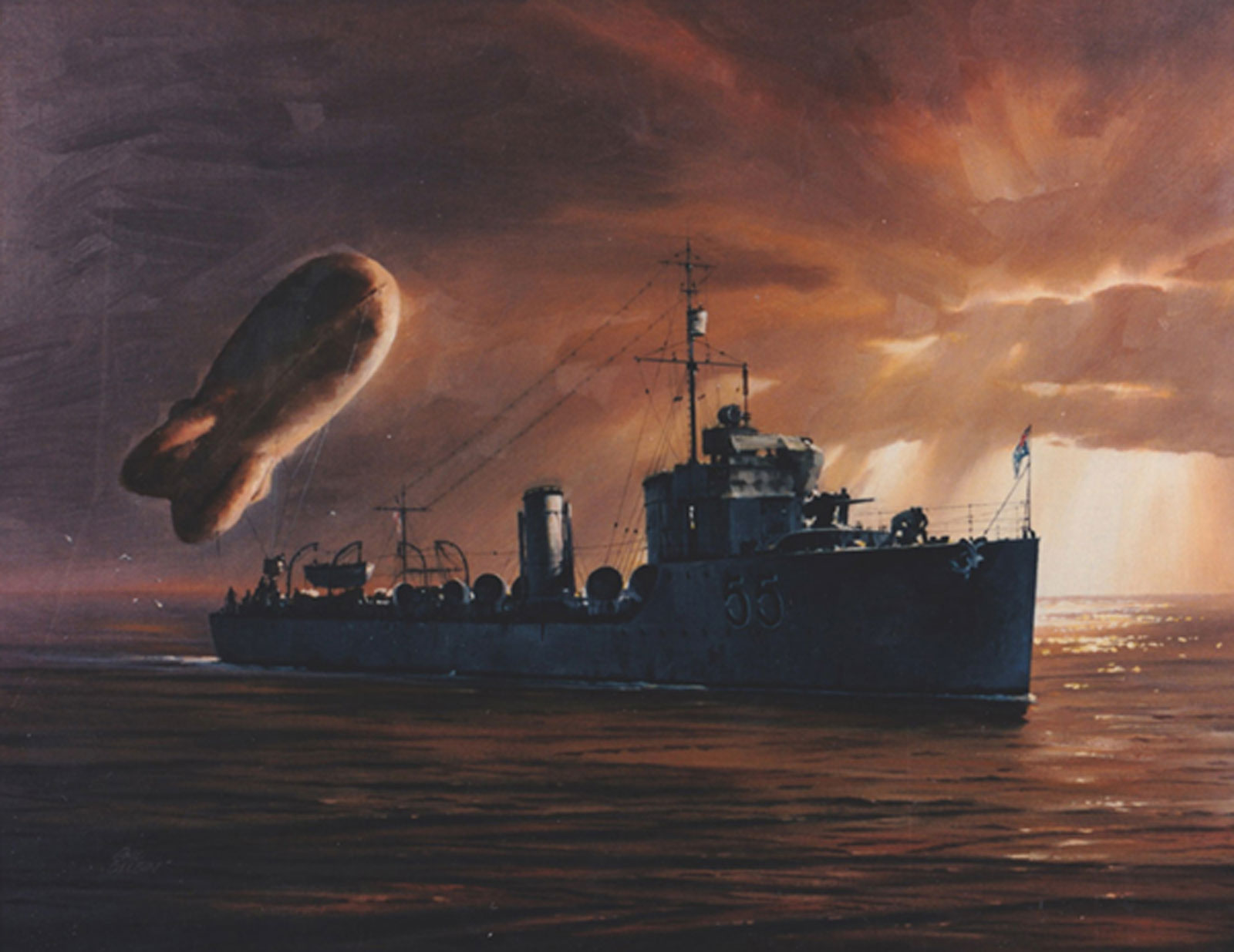HMAS Parramatta Torpedo Boat Destroyer 1912

The artist has painted HMAS Parramatta as a ship heading with strength and purpose to her appointed destination.
- About Arthur Victor Gregory
Arthur was perhaps the most prolific portraitist of Australian shipping, producing great numbers of paintings for more than 50 years. His father, George Frederick Gregory, established a marine painting business in Melbourne in the 1850s, in which Gregory's elder half-brother George Frederick Junior also worked. They made numerous photographic reproductions of their ship portraits, selling the originals to captains or owners, and the photographs to the crews.
Arthur inherited the business on the death of his father in 1890 and continued to paint until World War II, when he stopped for wartime security reasons. He kept all his working sketches so he could repeat earlier paintings and make more copies of the same ship. His carefully detailed portraits of every kind of vessel seen on Port Phillip Bay created a body of work regarded as a valuable record of the maritime traffic of that port, and indeed of Australian shipping for the period.
Arthur worked mainly in watercolour, rarely in oils. He was a master of his genre, and hence necessarily limited in stylistic development. He painted the contemporary and everyday, rather than the retrospective and nostalgic. The market for his work was largely the people who knew the ships and required accurate detail.
- About HMAS Parramatta (l)
HMAS Parramatta was one of six River Class torpedo boat destroyers built for the Royal Australian Navy during the period 1909-16. During World War I they formed the Australian Destroyer Flotilla. Sister ships were HMA Ships Huon, Swan, Torrens, Warrego and Yarra.
More reading
- Additional resources for Arthur Victor Gregory
- Additional resources for HMAS Parramatta (l)




